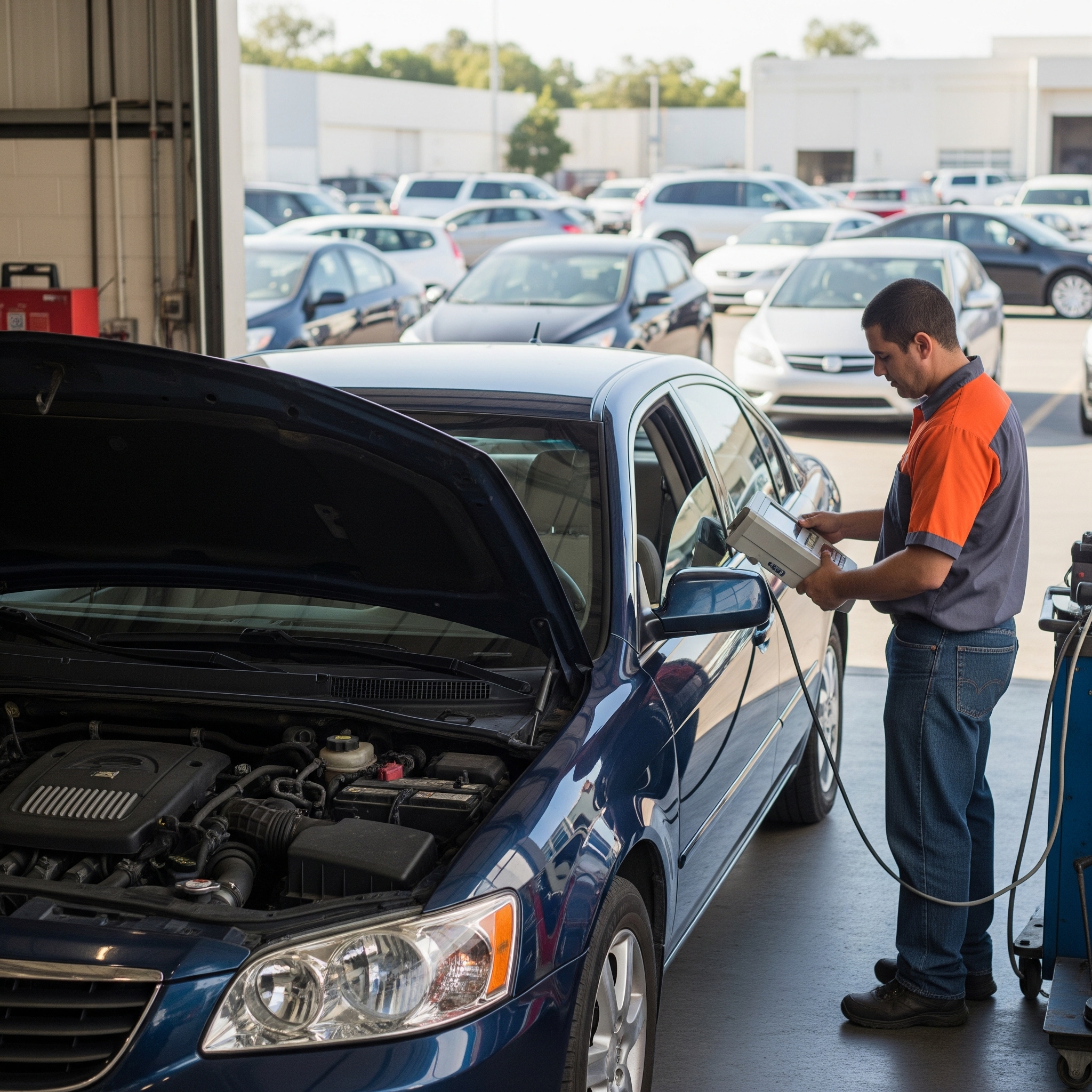The History of Smog Checks in California
Author
Kayvan N
Date Published

California's smog check program is a landmark effort in the fight against air pollution, a journey that began with a crisis and has evolved with technology. Here is a comprehensive look at the history of smog checks in the Golden State, from their origins to their modern-day purpose.
The Origins of the Smog Problem
The story of the smog check begins not in a laboratory, but in the streets of Los Angeles. In the 1940s and 50s, the city's booming post-war population and increasing number of automobiles led to a thick, yellow-brown haze that residents initially dismissed as a natural phenomenon or a "gas attack." Scientists soon discovered that this smog was a dangerous mix of pollutants, with vehicle exhaust being the primary culprit.
This discovery was largely credited to Dr. Arie Haagen-Smit, a Caltech professor who, in the early 1950s, determined that smog was formed when hydrocarbons and nitrogen oxides from vehicle exhaust reacted with sunlight. His research became the scientific foundation for modern air quality regulations.
The First Steps Towards Regulation
California took a pioneering role in addressing the issue, often moving ahead of federal standards.
1966: California established the nation's first tailpipe emissions standards for hydrocarbons and carbon monoxide.
1967: The state created the California Air Resources Board (CARB), a powerful agency tasked with developing and enforcing air pollution controls.
1970s: The federal Clean Air Act gave California the authority to set its own, stricter emissions standards due to the state's unique geographical and population challenges. This led to the development of innovations like the catalytic converter.
The Official Smog Check Program: BAR 84
While early regulations existed, the first truly comprehensive and mandatory Smog Check Program was established in 1984. This program, often referred to as "BAR 84" after the Bureau of Automotive Repair, was a significant turning point. It required vehicles in specific counties to undergo a biennial (every two years) smog inspection as part of the registration renewal process. The goal was to identify and repair vehicles with excessive emissions, a concept that was new and, at the time, met with some public opposition.
Evolution and Modernization
Since 1984, the program has continuously adapted to new technology and cleaner-running vehicles.
1990s: The program was updated with more accurate tests and a greater focus on high-pollution areas, leading to the creation of the Smog Check II Program.
1997: Exemptions were introduced for newer vehicles (at the time, vehicles less than four years old) to streamline the process for cars with advanced emissions technology.
2000 and beyond: The program began to shift its focus from a traditional "tailpipe test" to an On-Board Diagnostics (OBD) inspection for most vehicles manufactured in 2000 or later. This meant technicians could simply connect to a car's computer to check for emissions-related faults, a much faster and more accurate method.
2015: Hybrid vehicles, which were previously exempt, became subject to smog check requirements.
Today: The program is administered by the California Bureau of Automotive Repair (BAR) and works in conjunction with the DMV. The "8-year exemption" for newer vehicles is now a standard, and specialized STAR stations are designated to handle higher-polluting vehicles or those with a history of failing tests.
The Purpose and Impact of Smog Checks
The primary purpose of California's Smog Check Program is to improve air quality by reducing harmful vehicle emissions. It targets key pollutants such as hydrocarbons, carbon monoxide, and nitrogen oxides. The program has been a resounding success, credited with removing hundreds of tons of smog-forming emissions from the air each day. Beyond environmental benefits, smog checks also serve to:
Ensure Roadworthiness: By identifying emissions-related issues, they help vehicle owners discover and fix problems that could affect fuel efficiency and engine performance.
Facilitate Transactions: A passing smog check is required for most vehicle sales and for first-time registration of out-of-state vehicles.
From its reactive beginnings in the smog-choked air of mid-century Los Angeles to its modern, data-driven approach, the history of California's smog check program is a testament to the state's long-standing commitment to public health and environmental protection.

Discover what a smog check is, why it's required, and how to get through the process with ease. Plus, find out how SmogCheck.com helps you.